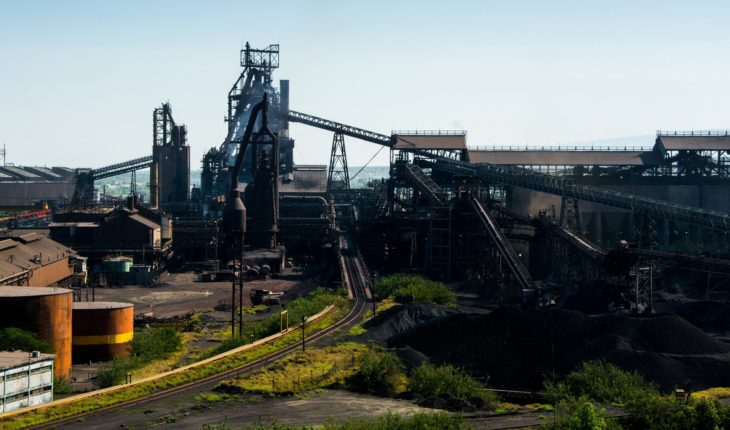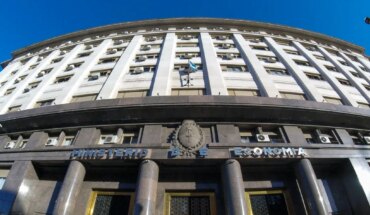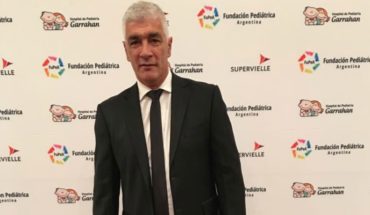After the exdirector of Pemex Emilio Lozoya was disbarred by alleged acts of corruption and obtain resources in an illicit way, little has been said of the company Altos Hornos de Mexico, whose accounts, like those of the exfunctionist, were frozen.
In 2014 Pemex announced the purchase and rehabilitation of Agro-Nitrogens, a company of blast furnaces of Mexico, the largest Acerero consortium in the country, and whose shares are listed on the Mexican Stock exchange.
READ: Intelligence unit freezes accounts of Emilio Lozoya for alleged corruption
When it was acquired, the Agro-nitrogen plant was 14 years old and with equipment of 30 years old.
In this transaction Pemex invested 475 million dollars, ensuring that this action would “reactivate the production of fertilizers in Mexico.”
According to an investigation of the organization 5 ° element, one month after its acquisition of Agro-Nitrogens, the company blast furnaces of Mexico, owned by Alonso Ancira, transferred more than 3.7 million dollars to the accounts of Grangemouth trading Company, Signature Offshore Of the Odebrecht construction company.
Grangemouth Trading Company has no registered employees and is domiciled in a department building in Edinburgh, Scotland.
READ: Despite the fact that Lozoya sought the closure of the file in the case of Odebrecht, Tribunal ordered to publish
The money was deposited to this company was for account number 244087 in the Meinl Bank, bank based on the Caribbean island of Antigua bought by Odebrecht officials to evade the controls of the international financial system.
From that account, according to the investigation, bribes were transferred to Presidents, ministers, vice minister, congressmen, directors of public and political enterprises from various Latin American and African countries.
Between 2013 and 2014 of the same account, the 5 million of dollars was transferred to Zecapan SA, the Phantom Company where the bribes were deposited for Emilio Lozoya.
The foregoing was confirmed, under oath to the Brazilian judiciary, by at least three of Odebrecht’s main exexecutives.
All the aforementioned transfers are reflected in the statements of the company Grangemouth trading Company LP.
The 5th Element investigation details as Luis Alberto de Meneses Weyll, former director of Odebrecht in Mexico, began a relationship with Emilio Lozoya to notice his closeness with who was President of Mexico from 2012 to 2018, Enrique Peña Nieto.
With the passage of time Lozoya and Meneses agreed to pay the 5 million dollars, in exchange for information and “help” that the Mexican exfunctionist provided the representative of Odebrecht with what the Brazilian company obtained “extensive benefits” to consolidate In our country.
Lozoya requested that the money be deposited with the accounts of two offshore companies: Latin American Asia Capital Holding and Zecapan SA, registered in the British Virgin Islands and with accounts in a bank of the Principality of Liechtenstein.
The benefit for Mexico’s blast furnaces
Of the 475 million dollars that Pemex paid for the purchase and reactivation of Agro-Nitrogens, 275 million were for the Treasury of blast furnaces of Mexico and other 200 were used to start the plant between November 2015 and April 2016.
The dates were not met and, according to the board of Directors of Pemex, the conditions of the plant were worse than what had been anticipated, which is why an extra budget of 285 million dollars for rehabilitation raising the final cost To 760 million, 000 dollars.
READ: The exdirector of Pemex, Emilio Lozoya and another high command of the oil company are disabled
With this change it was proposed that the starting date for the plant was between May 2017 and the third quarter of the same 2017, but this goal was not fulfilled either. In the end, the plant started testing for start-up in May 2018.
Although Mexican furnaces did not receive money or deposits in an irregular manner by the agreements between Lozoya and Odebrecht, the transaction of their purchase caught the attention of the Superior audit of the Federation (ASF) concluded that the acquisition of Agro-Nitrogens “is not Made with the best price and quality conditions “, based on the following findings:.
The purchase was made based on appraisals of Mexican blast furnaces “three months after the formalization of the contract”. Lös appraisals were a formality, since the value of the assets was “adjusted to fait accompli, that is to say to the amount already agreed previously of 275 million of dollars”.
An appraisal of the Institute of Administration and Appraisals of national Goods (Indaabin) made before the sale carried out placed the value of Agro nitrogenous in 168 million of dollars.
Pemex dismissed the official appraisal, making an over-cost of 95 million dollars as it paid 1.328 billion of more pesos for Agro-nitrogen.
60% of the machinery and equipment was useless.
No previous evaluations were carried out “because, according to Pemex, the seller was opposed, since it would lose the guarantee of the same”.
In the sale “we considered 432 assets valued at 26,265,000 dollars (337,934,000 pesos) that were later classified as obsolete material or junk.”
At the close of the audit (January 26, 2017) the plant had not entered into operation despite the fact that in the initial project it was estimated to start operations between 2015 and 2016.
Another audit found that: a fertilizer plant was bought with “incomplete equipment, in poor condition and not usable; The purchase lacked studies and analysis to ensure its profitability; Lack of experience of the company created by Pemex to produce fertilizers; There were no environmental permits, and the rule of using asbestos on roofs was ignored.
After the two audits, the ASF concluded that Pemex “made a bad acquisition and lost hundreds of millions of dollars.”
In addition to these irregularities, when Lozoya assumed the direction of Pemex, the acquisition of 41 terrestrial vehicles, nine aircraft and the installation of a command and Control Centre was authorized.
The units were aimed at “improving the protection of Pemex facilities” and “dismantling the illicit market for fuels and other organized crime activities”.
To acquire them, 2.521 billion pesos were required: 733.6 million for a Gulfstream G550 aircraft; 203.6 million in a Cessna Sovereign, and 118.8 million pesos in a Eurocopter EC-145 helicopter. The helicopter was delivered to Pemex on August 14th, 2014.
The ASF requested the secretariat of National Defense flight logs of aircraft and found that the Cessna Sovereign and the Eurocopter helicopter were requested via telephone from Pemex and the logs “only indicate the destination to which it was transferred to the ‘ DG ‘ (Director And passengers, without specifying the names of their companions. ”
It was also found that Emilio Lozoya made 727 trips in the Eurocopter for 2015, equivalent to two transfers per day. According to the ASF, all these flights were not “strategic” or “national security”.
On the transfers in the Eurocopter were also requested the logs and it was found that Lozoya used the helicopter to carry out 54 flights to Champs-Elysées 29, in Polanco. This address corresponds to the headquarters of the Tower of the Acerero group of the north, where the office of Alonso Ancira, president of the blast furnaces of Mexico is located.
With information from 5 ° element
Thank you for reading! Help us get on with our work. How? Now you can subscribe to the political Animal on Facebook. With your monthly donation you will receive special content. Find out how to subscribe here. Check out our list of frequently asked questions here.
translated from Spanish: The reasons for the freezing of accounts at blast furnaces
May 28, 2019 |





